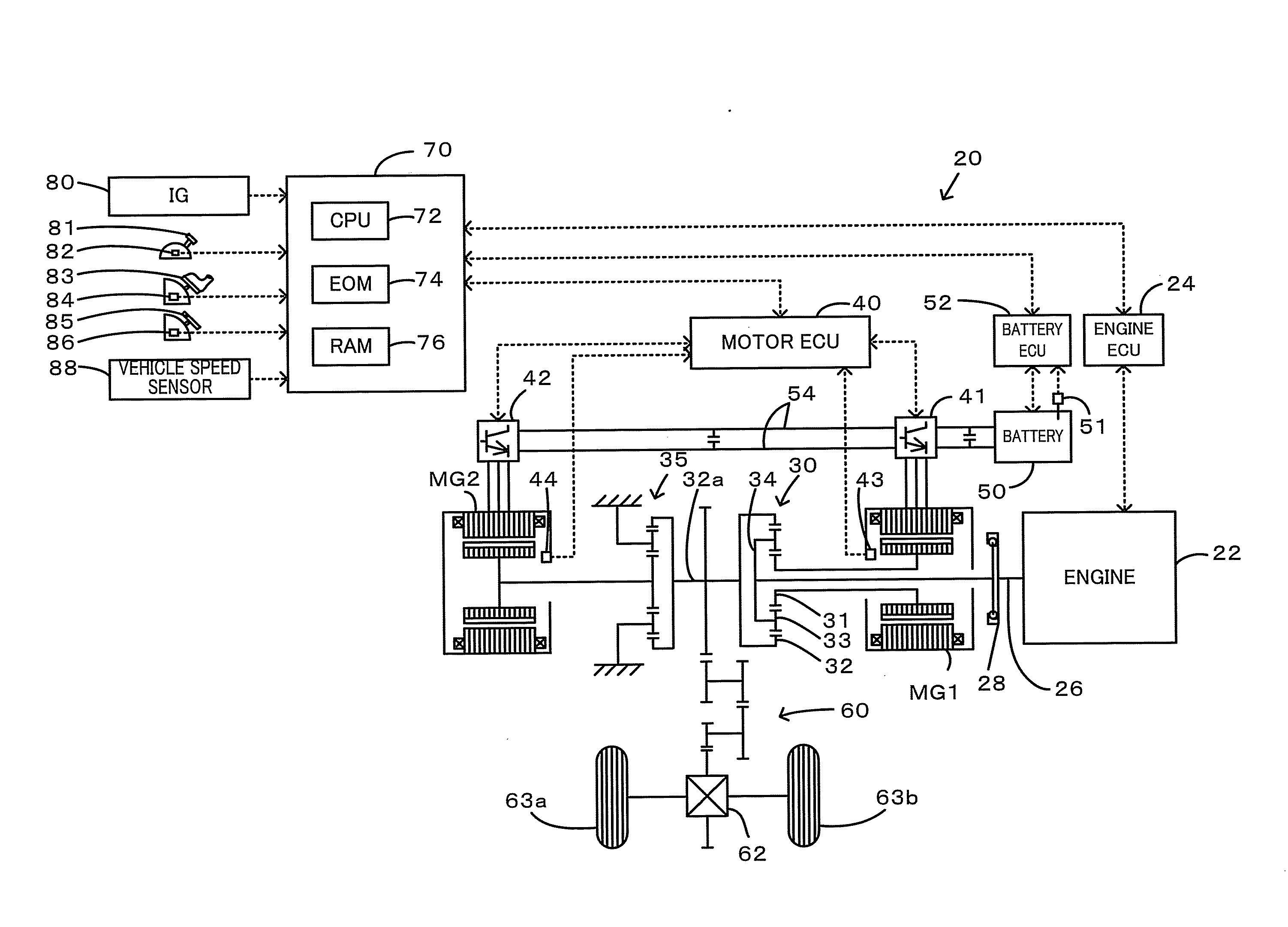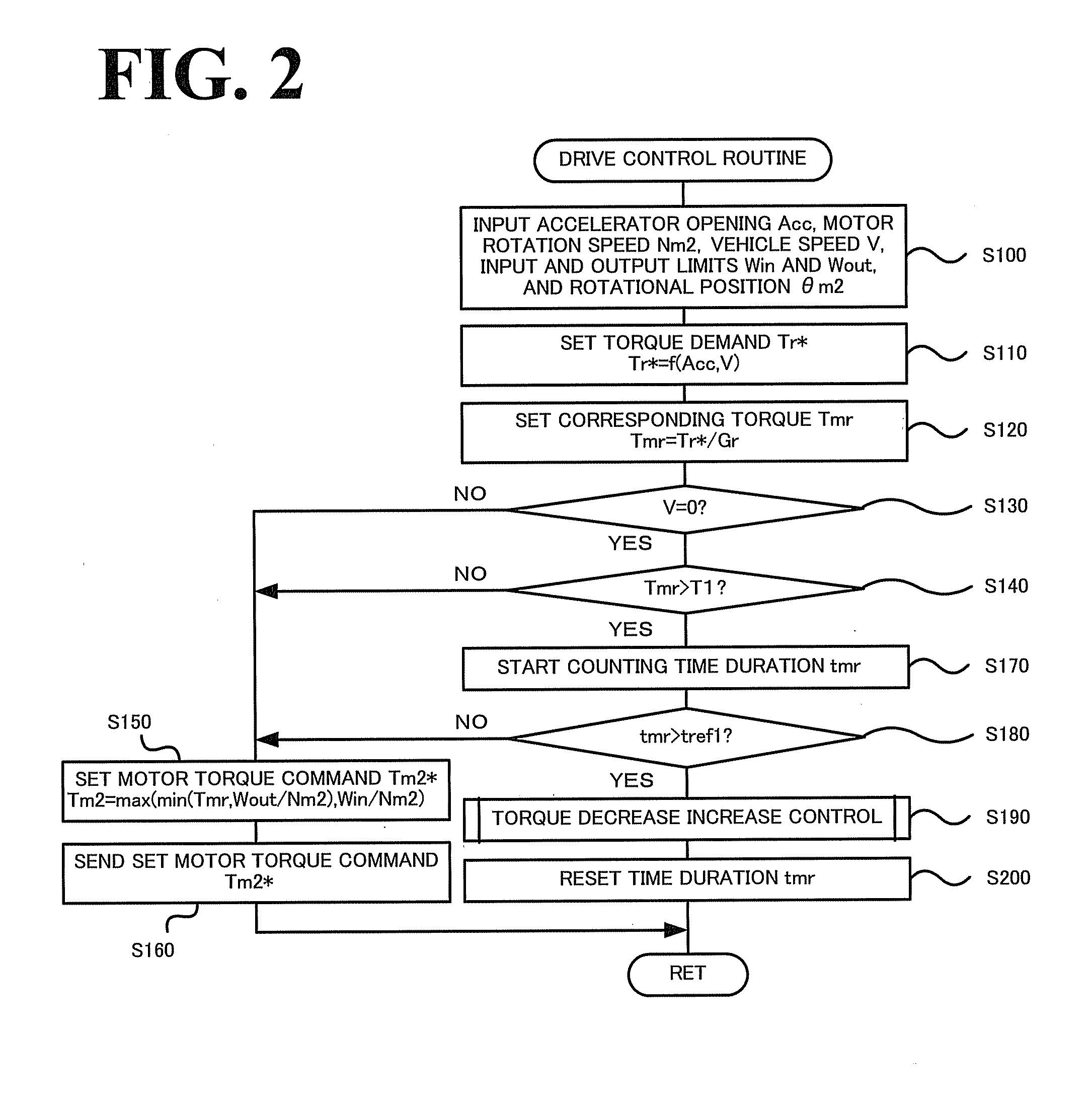Vehicle and driving system for vehicle installation
a technology for installing vehicles and driving systems, which is applied in the direction of driver input parameters, external condition input parameters, electric devices, etc., can solve the problems of slow increase of inability to ensure a quick response of the motor, and disappointingly slow torque output of the driver. , to achieve the effect of reducing the output torque of the motor, increasing the output torque, and reducing the driving distan
- Summary
- Abstract
- Description
- Claims
- Application Information
AI Technical Summary
Benefits of technology
Problems solved by technology
Method used
Image
Examples
first embodiment
[0054]The following describes the operations of the hybrid vehicle 20 of the first embodiment having the configuration discussed above, especially series of processing at a vehicle stop with output of a torque from the motor MG2 corresponding to the driver's accelerator operation. FIG. 2 is a flowchart showing a drive control routine executed by the hybrid electronic control unit 70. This routine is repeatedly performed at preset time intervals (for example, at every several msec) except the processing of steps S190 and S200. It is here assumed that the hybrid vehicle 20 is under operation control in the motor drive mode to ensure output of a power equivalent to a power demand from the motor MG2 to the ring gear shaft 32a at an operation stop of the engine 22 on an upslope.
[0055]In the drive control routine, the CPU 72 of the hybrid electronic control unit 70 first inputs various data required for control, for example, the accelerator opening Acc from the accelerator pedal position ...
second embodiment
[0086]The following describes the operations of the electric vehicle 320 of the second embodiment having the configuration discussed above. FIG. 11 is a flowchart showing a drive control routine executed by the electronic control unit 340.
[0087]In the drive control routine, the CPU 342 of the electronic control unit 340 first inputs various data required for control, for example, the accelerator opening Acc from the accelerator pedal position sensor 354, the vehicle speed V from the vehicle speed sensor 358, and the motor rotational position θm from the rotational position detection sensor 323 (step S500). The CPU 342 subsequently sets a torque demand Td* to be output to the driveshaft 332, based on the input accelerator opening Acc and the input vehicle speed V (step S510). A concrete procedure of setting the torque demand Td* in the second embodiment provides and stores in advance variations in torque demand Td* against the vehicle speed V with regard to various settings of the ac...
PUM
 Login to View More
Login to View More Abstract
Description
Claims
Application Information
 Login to View More
Login to View More - R&D
- Intellectual Property
- Life Sciences
- Materials
- Tech Scout
- Unparalleled Data Quality
- Higher Quality Content
- 60% Fewer Hallucinations
Browse by: Latest US Patents, China's latest patents, Technical Efficacy Thesaurus, Application Domain, Technology Topic, Popular Technical Reports.
© 2025 PatSnap. All rights reserved.Legal|Privacy policy|Modern Slavery Act Transparency Statement|Sitemap|About US| Contact US: help@patsnap.com



